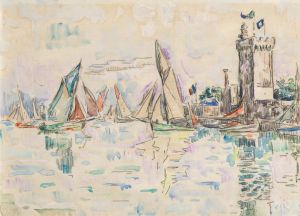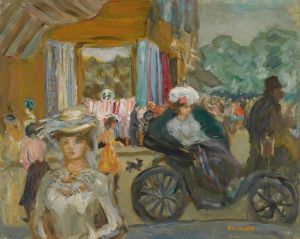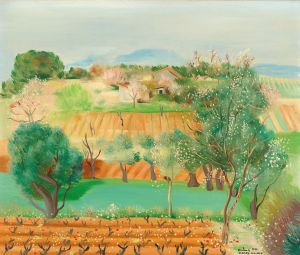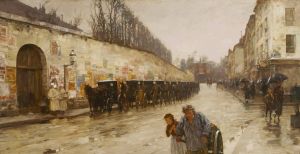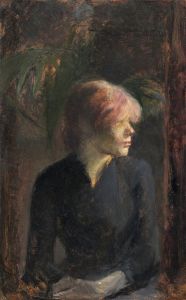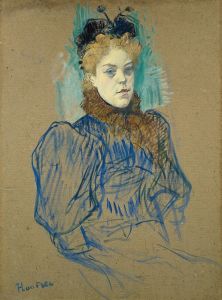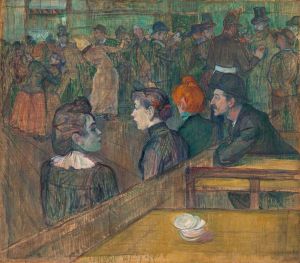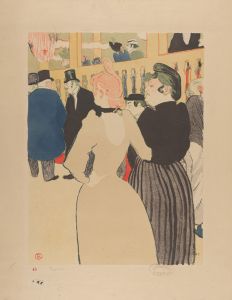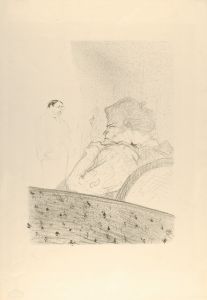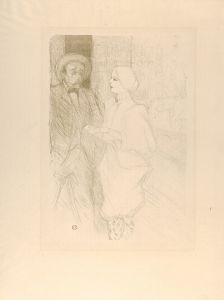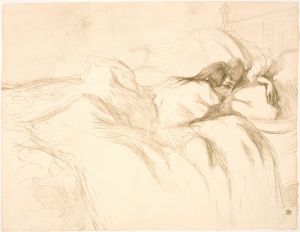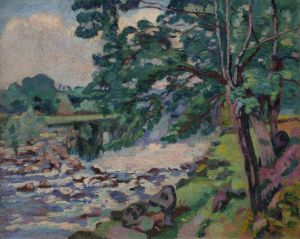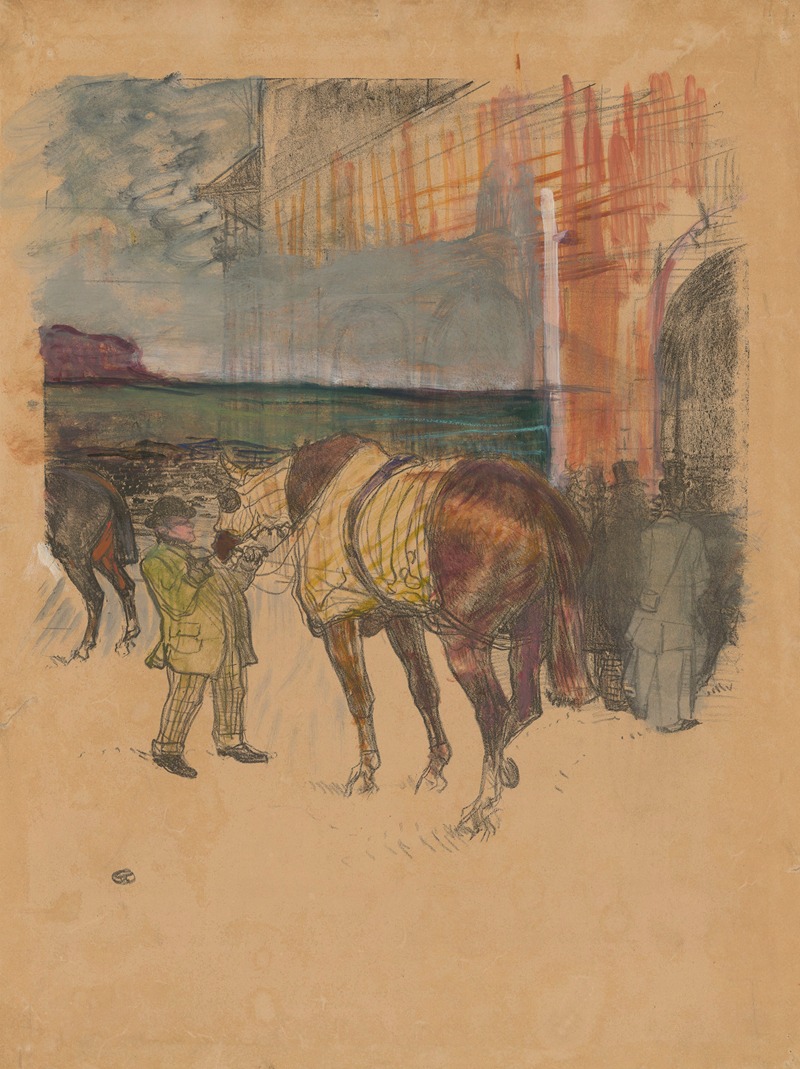
Le Paddock
A hand-painted replica of Henri de Toulouse-Lautrec’s masterpiece Le Paddock, meticulously crafted by professional artists to capture the true essence of the original. Each piece is created with museum-quality canvas and rare mineral pigments, carefully painted by experienced artists with delicate brushstrokes and rich, layered colors to perfectly recreate the texture of the original artwork. Unlike machine-printed reproductions, this hand-painted version brings the painting to life, infused with the artist’s emotions and skill in every stroke. Whether for personal collection or home decoration, it instantly elevates the artistic atmosphere of any space.
Henri de Toulouse-Lautrec, a prominent French painter, printmaker, draughtsman, and illustrator, is renowned for his depictions of the Parisian nightlife in the late 19th century. Among his diverse body of work, "Le Paddock" stands out as an exemplary piece that showcases his unique style and thematic interests. Painted in 1899, this artwork reflects Toulouse-Lautrec's fascination with the world of horse racing, a subject that captivated many artists of his time.
"Le Paddock" is an oil painting that captures the vibrant and dynamic atmosphere of a horse racing paddock. The paddock is the area where horses are paraded and prepared before a race, and it serves as a bustling hub of activity. Toulouse-Lautrec's depiction is characterized by his keen observational skills and his ability to convey movement and energy through his brushwork. The painting features a group of horses and their jockeys, along with spectators and trainers, all engaged in the pre-race preparations.
Toulouse-Lautrec's style in "Le Paddock" is marked by his use of bold lines and a vivid color palette. His technique often involved the use of quick, expressive brushstrokes that captured the essence of the scene without focusing on intricate details. This approach allows the viewer to feel the excitement and anticipation that permeates the paddock. The composition is dynamic, with the figures and horses arranged in a way that guides the viewer's eye across the canvas, creating a sense of movement and liveliness.
The painting also reflects Toulouse-Lautrec's interest in capturing the social aspects of horse racing. The inclusion of various figures, from the elegantly dressed spectators to the focused jockeys and trainers, highlights the diverse social interactions that occur in such settings. This attention to the social milieu is a hallmark of Toulouse-Lautrec's work, as he often sought to portray the human experience in its many forms.
Toulouse-Lautrec's fascination with horse racing can be traced back to his upbringing. Born into an aristocratic family with a strong equestrian tradition, he was exposed to the world of horses from a young age. This personal connection, combined with his artistic talent, allowed him to create works that resonate with authenticity and passion.
"Le Paddock" is part of a larger series of works by Toulouse-Lautrec that explore the theme of horse racing. These paintings and prints not only demonstrate his technical skill but also provide insight into the cultural significance of horse racing in late 19th-century France. The sport was a popular pastime among the upper classes, and Toulouse-Lautrec's depictions offer a glimpse into this world, capturing both its elegance and its energy.
Today, "Le Paddock" is appreciated not only for its artistic merit but also for its historical value. It serves as a testament to Toulouse-Lautrec's ability to capture the spirit of his time and to convey the vibrancy of the world around him. The painting remains a significant piece within his oeuvre, illustrating his unique perspective and his contribution to the art of his era.





